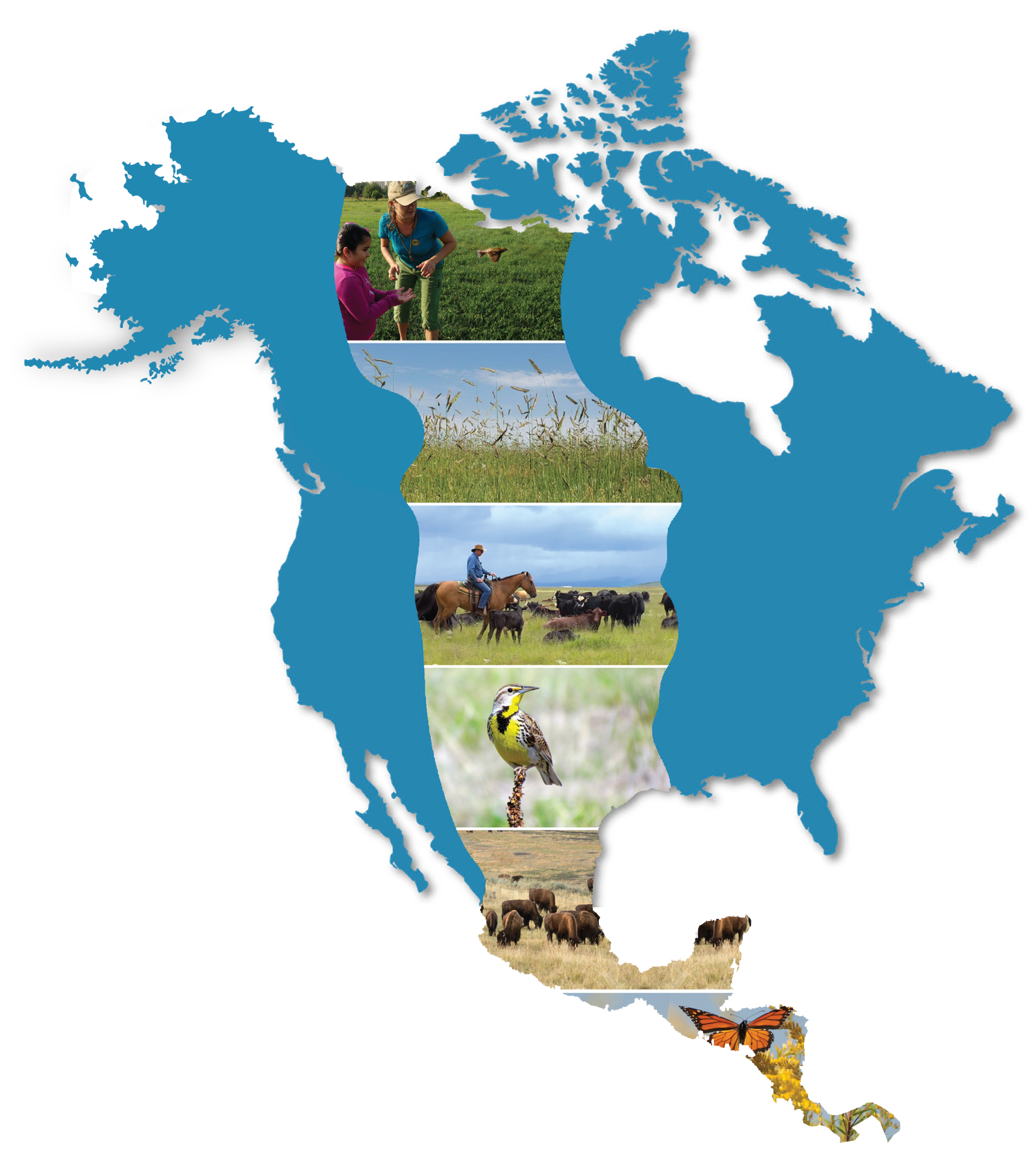
Grasslands Ecosystems & Biodiversity
The Grasslands Ecosystem
Protecting our prairies: Research and policy actions for conserving America’s grasslands: Grasslands are among the most endangered ecosystems in the world. They supply vital resources for society, support an abundance of wildlife species, and store rich carbon reserves beneath their surfaces. Despite this, only a fraction of original grasslands in the United States now remains, and their rate of conversion to cropland has recently reaccelerated. This paper discusses opportunities that are immediately available to reduce the loss of U.S. native grasslands (i.e., prairie) and advance toward collective goals in grassland conservation.
Grassland Assessment of Prairie Potholes Joint Venture: Another effective collaborative conservation effort, the Prairie Pothole joint venture recently led an assessment of critical grasslands to address land degradation and subsequent declines in migratory bird populations. The team used satellite landcover data to carry out the assessment and reached concerning findings about the decline of PUDL (potentially undisturbed land).
REPORT ON THE STATUS OF GRASSLANDS IN THE CHIHUAHUAN DESERT: In 2019, American Bird Conservancy and Pronatura Noreste put together a report about the status of the grasslands in the Chihuahuan Desert in English and Spanish.
Ecoregional Conservation Assessment of the Chihuahuan Desert: The Chihuahuan Desert Ecoregion has been subject to livestock grazing for hundreds of years given its lengthy civilized history. This assessment by Pronatura Noreste in partnership with The Nature Conservancy, and the World Wildlife Fund is an extensive report on the “most robust dataset possible on the state of conservation projects throughout the Desert.
Thinking Like a Grassland: Challenges and Opportunities for Biodiversity Conservation in the Great Plains of North America: The current complex pattern of land ownership and use of Great Plains grasslands challenges native species conservation. Approaches to managing both public and private grasslands, frequently focused at the scale of individual pastures or ranches, limit opportunities to conserve landscape-scale processes such as fire, animal movement, and metapopulation dynamics. Using the US National Land Cover Database and Cropland Data Layers for 2011-2017, we analyzed land cover patterns for 12 historical grassland and savanna communities (regions) within the US Great Plains.
Water and the Grasslands
Birds
Birds Canada's Bird-friendliness Index Summary and Hodgins Farm Case Study
Bird expert and poet Drew Lanham on how he’s inspired by the natural world
North American Grasslands & Birds Report: The 2019 Audubon North American Grasslands & Birds Report evaluated the need for conservation in the age of rising global temperatures. Similar to the National Fish and Wildlife Foundation’s 2016 Business Plan, the Report used representative species especially vulnerable to climate change to identify the areas most susceptible to habitat loss and population declines.
A Full Annual-Cycle Conservation Strategy for Sprague’s Pipit, Chestnut-collared and McCown’s Longspurs, and Baird’s Sparrow: Collaboration between the Fish and Wildlife Service and Prairie Pothole Joint Venture spawned a long-term strategy centered around the preservation of four “priority” grassland species. Along with the work of 20+ partner organizations, the conservation plan outlines the future work of state agencies, federal agencies, and NGOs ranging from Mexico, the US, and Canada.
Wintering Ground Plans for Sprague’s Pipit and Mountain Plover: Pronatura Noreste developed two Business Plans for wintering grounds for two priority species, Spragues’s Pipit and Mountain Plover. The two documents are in Spanish only, and are solid planning instruments that have been the guidelines for projects focused on these species.
The Lesser Prairie-Chicken Range-wide Conservation Plan – WAFWA: The Lesser-Prairie Chicken (LPC) was listed as “threatened” under the Endangered Species Act in 2014, but was subsequently considered for removal from the in 2015 after a significant interstate push for the conservation of its habitat and the survival of the species. Some of the main proponents of the prompt response were the five WAFWA directors of the five states identified as providing habitat to the LPC.
Effect of Wind Energy Development on Breeding Duck Densities in the Prairie Pothole Region
Insects
Mammals
Predicted future range expansion of a small carnivore: swift fox in North America
Homes on the Range: Large-scale collaborative conservation planning initiative for the black-tailed prairie dog: This effort focuses on black-tailed prairie dog (BTPD) ecosystems. Prairie dogs are keystone species and their conservation and management often lies at the core of many conservation efforts across the region. Through mapping and ecological modelling, our team is working to identify potential landscapes for conservation.
Artificial beaver dams help Montana ranchers restore streams and protect wildlife
Assessing population-level consequences of anthropogenic stressors for terrestrial wildlife
Present and future suitable habitat for the black-tailed prairie dog (BTPD) ecosystem
